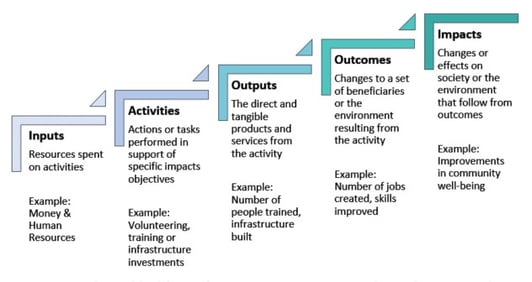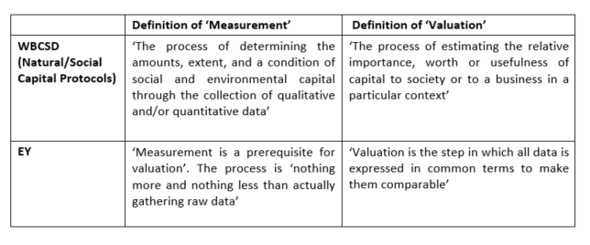Cority recently conducted an extensive piece of research on social and environmental impact reporting. There has been an increasing maturity and awareness of sustainability issues and their potential risk to businesses and communities. Thus, there is an emerging trend in this area of company reporting. With so much information available, it is not always clear for businesses that want to provide better sustainability disclosures where to begin, what to consider, and what to prepare for.
In this 3-part blog series, we will provide an overview of the key findings of this research to inform our clients, partners, and a wider audience about existing trends and challenges in the impact measurement and reporting space. We also aim to clarify some misconceptions about terminology and valuation methodologies that currently exist in the field.
The three-part series will consist of the following content:
- The state of social and environmental impact measurement and reporting.
- Frameworks, methodologies, and tools for impact measurement.
- The business response to impact measurement & key conclusions.
The State of Social and Environmental Impact Measurement and Reporting
Businesses are increasingly being scrutinized on how they contribute to global issues such as economic inequality, limited natural resources, pressures of climate change, and environmental conservation. Since the introduction of the Sustainable Development Goals (SDGs), more leaders have recognized the importance of managing their social and environmental risks and opportunities.
For many stakeholders, it is no longer sufficient for businesses to measure and report their social and environmental performance without giving their figures further context in terms of their impacts. Businesses are increasingly being held to account for their social and environmental externalities and called upon to recognize long-term, sustainable value creation for all stakeholders.
Some of the positive impacts of business activities are evident. However, it is not as clear when it comes to the negative social and environmental effects of businesses’ actions, programs, and investments. Currently, both internal and external stakeholders of businesses are seeking more sophisticated information. That allows them to measure and value the socio-economic and environmental effects of activities on the well-being of societies and the environment they interact with.
Despite being a voluntary initiative, the interest in impact measurement, valuation, and reporting is increasing across different organizations and industries. Organizations are keen to explore and implement new types of disclosures. This enables decision-makers to improve their sustainability strategies and shift social and environmental change in a positive direction.
Measurement Frameworks and Methodologies
Substantial work has been conducted by the OECD, World Economic Forum, WBCSD, Social Value International, and many others to increase awareness about current social and environmental externalities. However, with so many frameworks, methods, and tools available in the related field, many practitioners find it hard to know where to start, what methods to use, and which metrics to measure.
Within the last decade, the number of frameworks, methods, and tools for impact measurement has increased. This has been a response to growing demands from businesses for new ways of strategic thinking and sustainability reporting. They have been designed to measure the impacts of programs, activities, and investments. All have different objectives as well as geographical, organizational, and temporal boundaries.
The Natural Capital Protocol Toolkit alone contains information on 59 different frameworks, guidelines, and methods. It also contains online tools developed for natural capital measurement and valuation. Well-recognized international organizations and consultancy firms such as PwC, Deloitte, EY, and Accenture have also developed their own frameworks and guidelines on how to approach social and environmental impact measurement.
Evidently, every framework or tool comes with its advantages and disadvantages associated with data collection, and methodology complexity. But also when it comes to human and financial capital requirements. Many active players in the field acknowledge the challenges and uncertainties related to impact measurement and reporting. However, it is not as evident for organizations that they are at the beginning of their ‘impact’ journey.
(We will cover frameworks and methodologies in more detail in Part 2 of our blog)
Terminology and Definitions
With any emerging practice comes new terminology and definitions. Unsurprisingly, there are areas of definitional confusion among different stakeholders. Hence, as part of this research, Cority has sought to provide clarifications and definitions for common terminology that are currently in use in the impact sector.
By conducting both quantitative and qualitative research, Cority established that different organizations take differing approaches to defining their social and environmental impacts. For instance, it was noticed that some organizations describe their carbon or any other ecological footprint as their ‘environmental impact’. It is unarguable that the management of environmental performance is a core component of sustainable business strategies. However, traditional measurement tools such as carbon footprinting tend to focus on the measurement of inputs, activities, and outputs. They do not account for the benefits and costs that businesses bring to society and the environment.
Understanding the differences and relationships between outputs, outcomes, and impacts of activities is critical for businesses. This will help them set a foundation for rigorous implementation of impact measurement and valuation.

Figure 1. Impact pathway with key definitions of inputs, activities, outputs, outcomes, and impacts (various sources)
An example of the Impact pathway could be for a charity project involved in educating youth from deprived areas in solar energy installations.
- The Inputs would be the financial donations, materials, and the time spent by the charity to coordinate the activities.
- Activities would be training courses for the youths.
- These would lead to the Outputs – the number of youths trained in solar installations.
- The Outcomes would be an improvement in the skills of those youths and an increased awareness of renewable energy.
- These will in turn lead to the Impacts of lower unemployment, more clean energy adoption, and improvements to the wider community.
A review of existing literature on Impact measurement and reporting also led us to conclude that there are differences in definitions of ‘measurement’ and ‘valuation’. WBCSD and EY provide clear definitions of these terms in relation to impacts as outlined below:

In part 2 of this blog, we will introduce the frameworks, methods, and tools available for impact measurement.
References
https://www.oecd.org/dac/financing-sustainable-development/development-finance-topics/social-impact-investment-initiative.htm
https://www.weforum.org/agenda/2018/10/here-s-how-impact-investing-can-change-the-world/
https://www.weforum.org/about/mainstreaming-impact-investing-2015/
https://www.wbcsd.org/Programs/People-and-Society/Tackling-Inequality/Resources/WBCSD-Measuring-Impact
https://www.naturalcapitaltoolkit.org/
http://socialvalueint.org/











